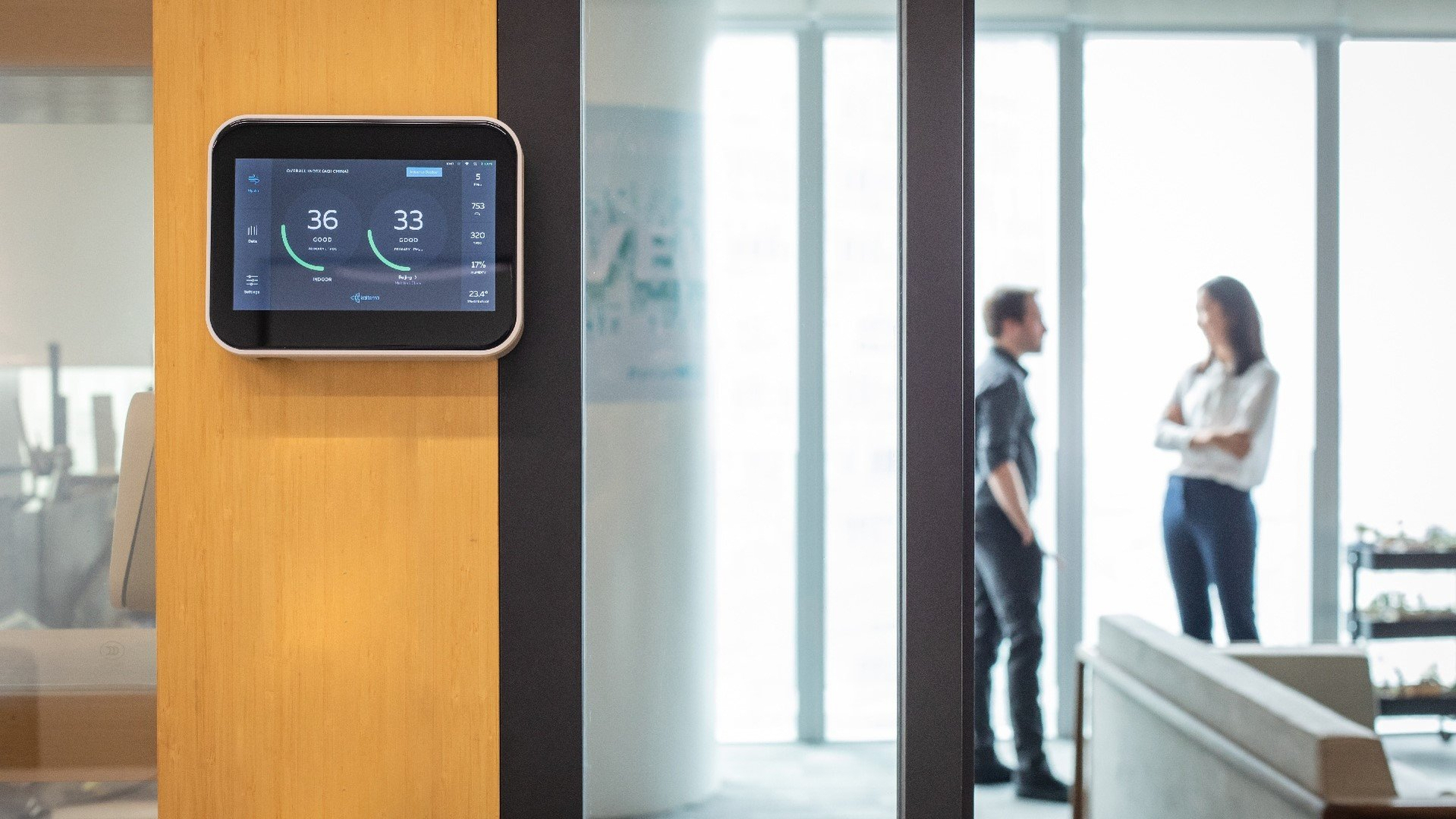Newsletter
In a move that has been hailed as groundbreaking, the US Centers for Disease Control and Prevention (CDC) has recently revised its guidelines for ventilation in buildings – signaling a significant shift towards health-centered approaches. Let’s take a closer look at what’s changed and the potential impact.
4 Key Updates in the CDC's New Guidelines
Here are the most important additions to the building ventilation guidelines:
1. Targeting 5 air changes per hour (ACH)
The CDC recommends aiming for at least five air changes per hour (ACH) of clean air in occupied spaces. This can be achieved through mechanical ventilation, natural ventilation, or devices that provide equivalent ACH such as air cleaners or purifiers. This level of air exchange helps reduce the number of germs and contaminants in the air, and lowers the risk of airborne infections.
2. MERV-13 filter recommendation for HVAC systems:
The Minimum Efficiency Reporting Value (MERV) rating indicates the efficiency of HVAC filters. The CDC now recommends upgrading to MERV-13 filters whenever possible. More efficient filters capture a wider range of particles, including exhaled viral matter and outdoor air pollution, thereby improving overall indoor air quality.
3. Updated guidance for post-occupancy air flushing in buildings
The revised recommendation is to run the HVAC system at maximum outside airflows for a minimum of 2 hours or until achieving at least 3 air changes after the building is no longer occupied. This ensures effective removal of contaminants and improves indoor air quality during occupancy hours.
4. Cost considerations for ventilation strategies:
The guidelines include information on installation, maintenance, and energy consumption costs associated with various ventilation strategies. This is meant to allow building owners and operators to make more informed decisions and choose the ventilation solutions that best fit their particular circumstances.
Not Just a COVID Mitigation
Although the guidelines were issued in light of the COVID-19 pandemic, their implications are further-reaching. Public health experts have highlighted that they can be seen as a strategic roadmap for mitigating a wide array of airborne hazards.
In addition to helping prevent the spread of other infectious diseases such as COVID and influenza, applying these standards and best practices can also reduce the risks associated with wildfire smoke, allergens, reduced productivity, and other hazards associated with poor air quality.
What Else is Covered in the CDC Guidelines?
Regardless of the recent changes, the CDC's ventilation guidelines provide a useful set of recommendations and strategies for improving indoor air quality. The document emphasizes the role of proper ventilation in reducing airborne viral particle concentration and overall exposure. Additionally, it discusses various mitigation strategies, such as implementing multiple building-level interventions and adopting a layered approach to maximize effectiveness.
The guidelines suggest practical measures such as increasing outdoor air intake, using fans to enhance open windows' effectiveness, and rebalancing HVAC systems. They also address air cleanliness, focusing on upgrading central HVAC filter efficiency, inspecting and maintaining ventilation systems, and using HEPA filters or alternative devices like UVGI systems.
To gain a deeper understanding of these recommendations and learn more about how they can be applied in different building types, occupancies, and environments, refer to the full CDC ventilation guidelines here.
What About the New ASRHAE Standard?
Shortly after the CDC’s announcement, the American Society of Heating Refrigeration and Air Conditioning Engineers (ASHRAE) released a draft for a new pathogen-mitigation standard titled Control of Infectious Aerosols (full text, PDF). This first-of-its-kind standard aims to establish minimum requirements for controlling infectious aerosols to reduce the risk of transmission, and applies to occupiable spaces in new buildings, existing buildings, and additions to existing buildings.
Like the CDC's guidelines, the ASHRAE standard emphasizes the importance of ventilation, filtration, and air-cleaning systems to reduce exposure to infectious aerosols. It sets much more detailed numeric targets for many of these, as well as instructions for training and documenting IAQ efforts related to a building.
Our Take: The Importance of Clear Targets and Quantitative Approaches
The CDC's new guidelines represent a significant step forward for indoor air quality. As Joseph Allen of the Harvard Healthy Buildings Program points out, it’s particularly noteworthy that the CDC has named a concrete and specific target of 5 ACH. Attempts to improve ventilation often become mired in vague mission statements and contradictory IAQ standards, making it challenging to set realistic goals and achieve tangible results. Using quantitative metrics helps steer discussions to a more actionable path.
The ASHRAE draft follows the same principles as the new CDC guidelines in setting clear performance-based benchmarks to create healthier indoor environments. The release of these two documents in quick succession also highlights the importance of harmonizing ventilation standards between the public sector and industry organizations.
At Kaiterra, we firmly believe in a more data-driven and performance-based approach to indoor air quality. Recent developments align with this view and are a welcome change. Setting quantifiable goals allows businesses and building owners to continuously evaluate and improve their indoor air quality, and to measure themselves against specific benchmarks instead of anecdotes and guesswork.
The updated requirements also demonstrate the increasing recognition of the importance of indoor air quality in light of the lessons learned from the pandemic. Awareness and adoption of comprehensive standards can only benefit public health, wellbeing, and productivity in the long term.
Kaiterra provides air quality monitors and an IAQ analytics dashboard for healthy buildings and offices, helping workplace leaders and healthy building pioneers assess and improve their indoor air quality. Our indoor air quality monitors like the Sensedge and the Sensedge Mini can be found in many of the world’s most iconic buildings and workplaces, such as the Empire State Building and the Burj Khalifa.






.png?width=200&height=148&name=Menu%20C%20(2).png)

.png?width=307&height=228&name=Menu%20-%20D%20(1).png)
.png)




